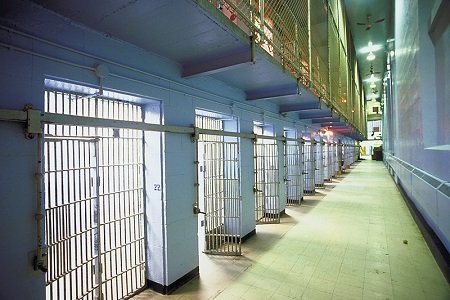Less than three months after marking the 50th anniversary of the landmark Brown v. Board of Education U.S. Supreme Court decision rendering state laws establishing separate public schools for black and white students unconstitutional, the City of Baltimore is set to enact one of the country’s toughest youth curfews. Is this new law a good idea, a way to keep children safe from the dangers of Baltimore’s crime-ridden streets? Or does its enforcement have the potential to keep more poor and minority students out of the classroom and shuffle them into the criminal justice system?
Starting on August 8, 2014, it will be illegal for children under 14 to be outside their homes after 9 p.m. Young people aged 14 to 16 would be banned from being outside on school nights after 10 p.m. and on other nights after 11 p.m.
At a police officer’s discretion children who violate this law can be taken to a curfew center to await pick-up by a parent or guardian who would be required to take city-approved parenting classes.
Multiple offenders could face a $500 fine for repeat violations, up from the previous $300.
It should be noted that Baltimore has had curfew laws on the books for years; children younger than 17 could stay out until 11 p.m. on weeknights and until midnight on weekends. In the past, enforcement was sporadic but that is expected to change after next week.
As a longtime resident of Baltimore, raised by old school parents, I believe without question children should not be allowed to roam the city without adult supervision beyond nightfall. Back in the day when the streetlights came on it was “Cinderella” time. You and your friends were expected to quickly head home. It was understood families were the first line of defense for keeping children safe after dark.
These self-imposed curfews were based on widely accepted societal standards of decency and common sense. Today, the most expedient (and cheapest) way to solve social issues— once the domain of the family— is to legislate a heavy-handed approach to a complex problem caused in part by the chronic lack of parental supervision and the city’s unwillingness to direct resources to children.
I offer a few things to consider as we approach this misguided law. First, anyone who questions whether the curfew is a new portal to the school-to-prison pipeline, which is proportionately puts poor, minority students on the path to early incarceration, should ask themselves how many, if any children from affluent Baltimore neighborhoods such as Roland Park, Guilford and Federal Hill are likely to be picked up for violating curfew.
“Black children constitute 18 percent of the nation’s public school population but 40 percent of the children who are suspended or expelled,” said Congressman John Lewis (D-GA). This law opens the opportunity to paint another target on the backs of students already burdened with parents unwilling or unable to retrieve them. Work schedule conflicts, substance abuse issues, absenteeism, lack of transportation and illness could leave a child stranded for hours at the curfew center.
While working as a communication director at a W.K Kellogg Foundation neighborhood transformation site in Sandtown-Winchester, I witnessed an alarming number of children who looked no older than seven or eight out alone at night. One evening, I saw a little boy coming out of the corner store clutching a paper bag and holding the hands of two younger children. I watched as they waited for the cars to stop zooming down Fulton Avenue and when the traffic cleared the intersection they quickly crossed the street and disappeared into the darkness. It was a heartbreaking sight.
Life is hard enough for young kids who have to make their way across busy streets at night. They should be spared the trauma of being thrown into the back of a police car.
Jayne Matthews Hopson writes about education matters because “only the educated are free.”
